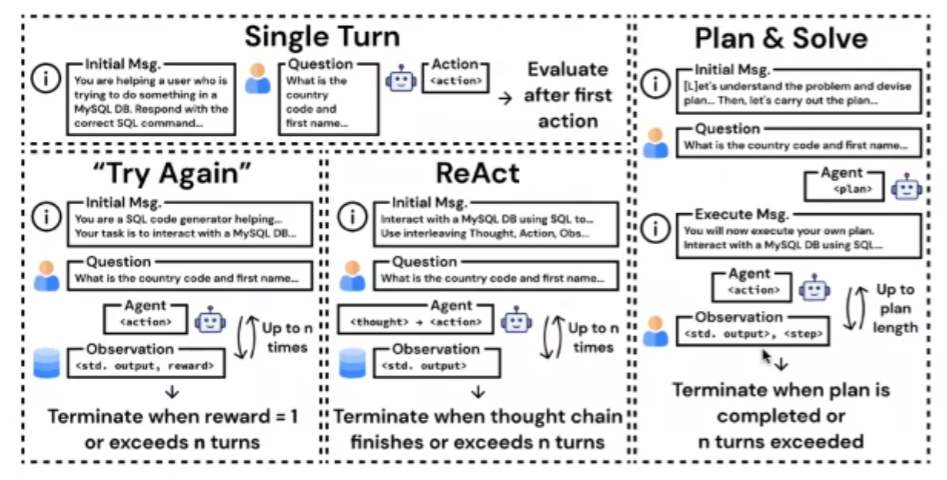Source
- CoALA (Princeton) (49) I-X Seminar: Formulating and Evaluating Language Agents with Shunyu Yao - YouTube
Takeaway
- LLM -> prompt engineering -> Agent (very hard!) to interact with environment using LLM
What is LLM Agent?
- Agent can interact via action with environment.
- LLM agent: Use LLM to interact with environment
- Typical tie to robot
Question? What’s the relationship between LLM agent vs. RL agent?
Application
Key
- Formulation
- Evaluation
Formulation
Use CPU analogy to LLM
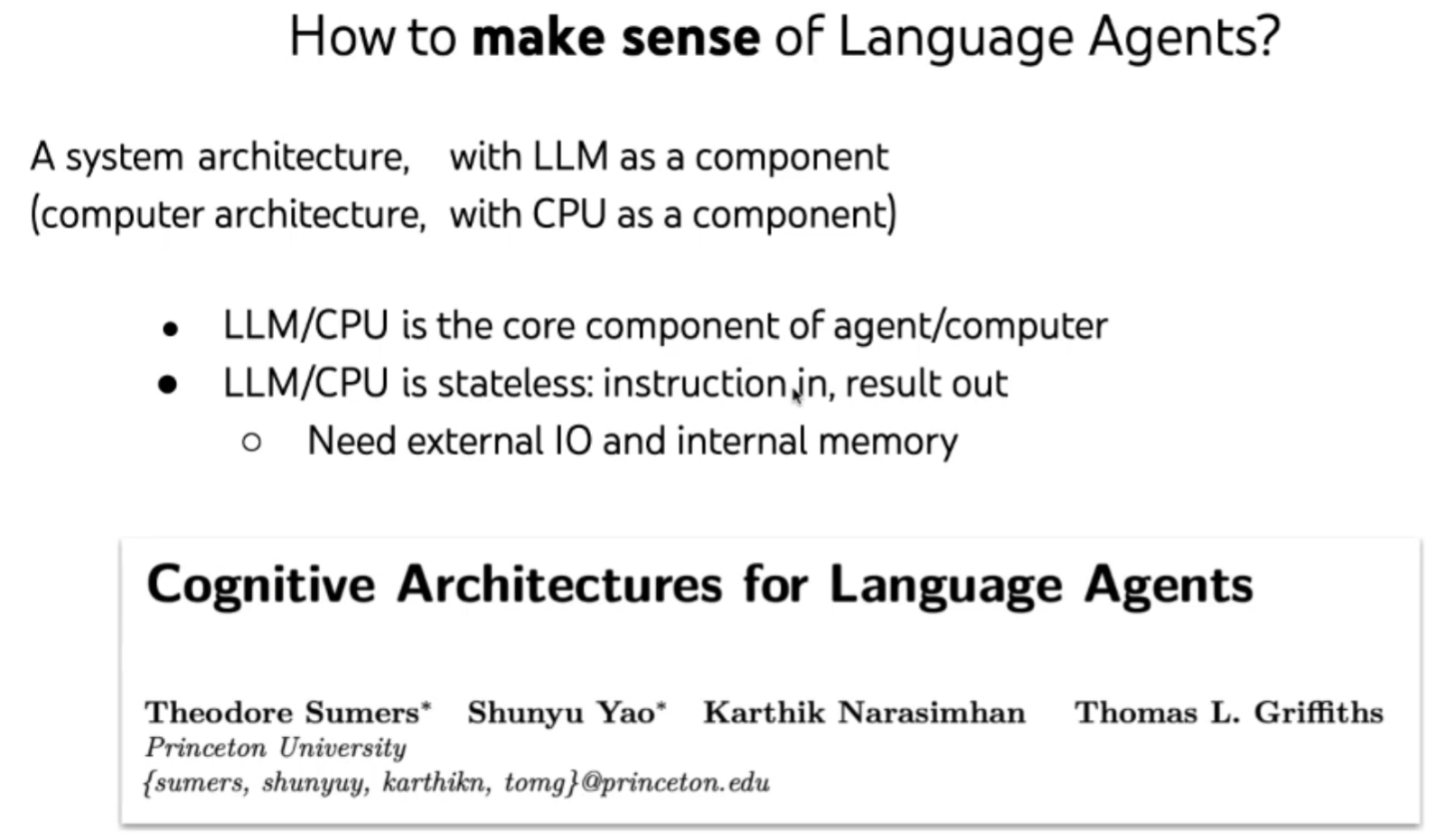
RL Agent
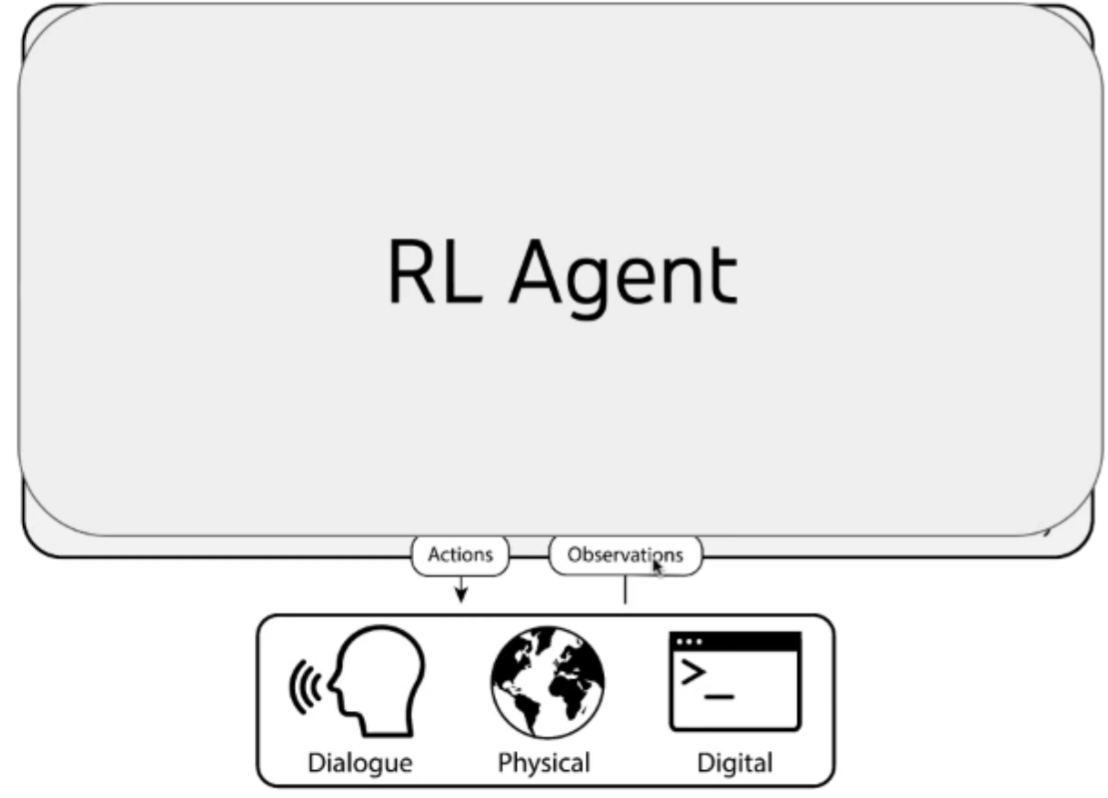
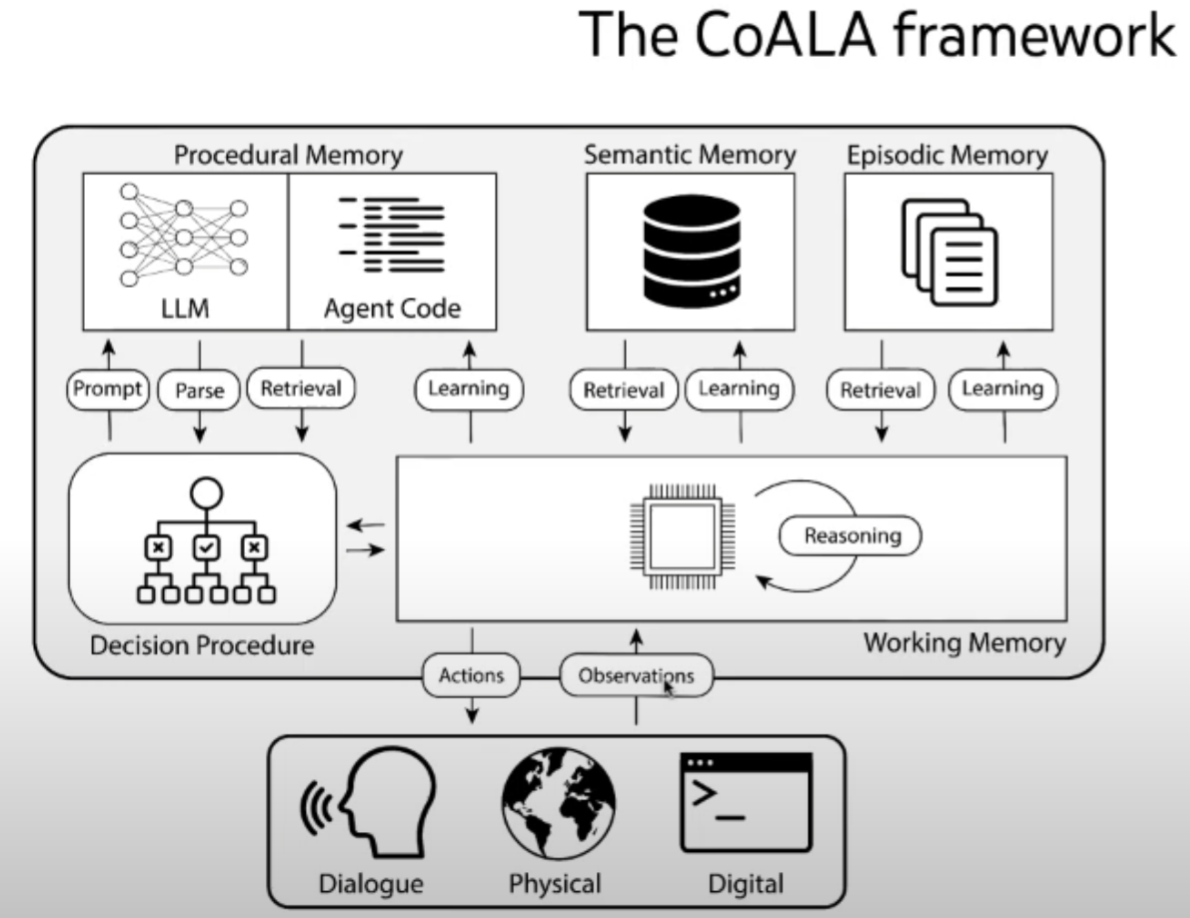
-
Memory: because LLM is “stateless”, need memory; different from RL
- short-term working memory
- long-term memory: Episodic (experience); semantic (knowledge); procedural (LLM, code)
-
Action (space): RL is defined by action space.
*External actions interact with external environments (grounding) - same as RL agent
*Internal actions interact with internal memories - different from RL agent
- Reasoning: read & write working memory (via LLMs)
- Retrieval: read long-term memory
- Learning: write long-term memory (or weights)

-
Decision making
- A language agent chooses actions via decision procedures
- Split taken actions into decision cycles
- A language agent chooses actions via decision procedures

Framework Application

Evaluation
- Interact with physical world / humans: hard to scale
- Interact with digital simulation (Atari, Mujuco): hard to be practical
- Interact with digital applications: ?
- Interact with web (smartphone)
- Interact with code (PC, ..) productivity
Webshop: query, modification, and web purchase
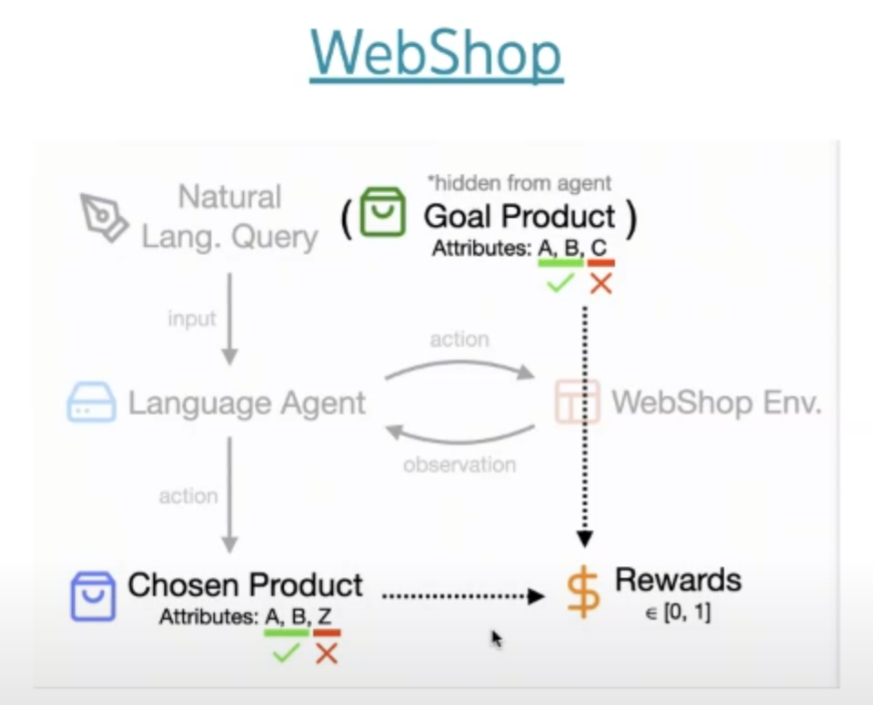
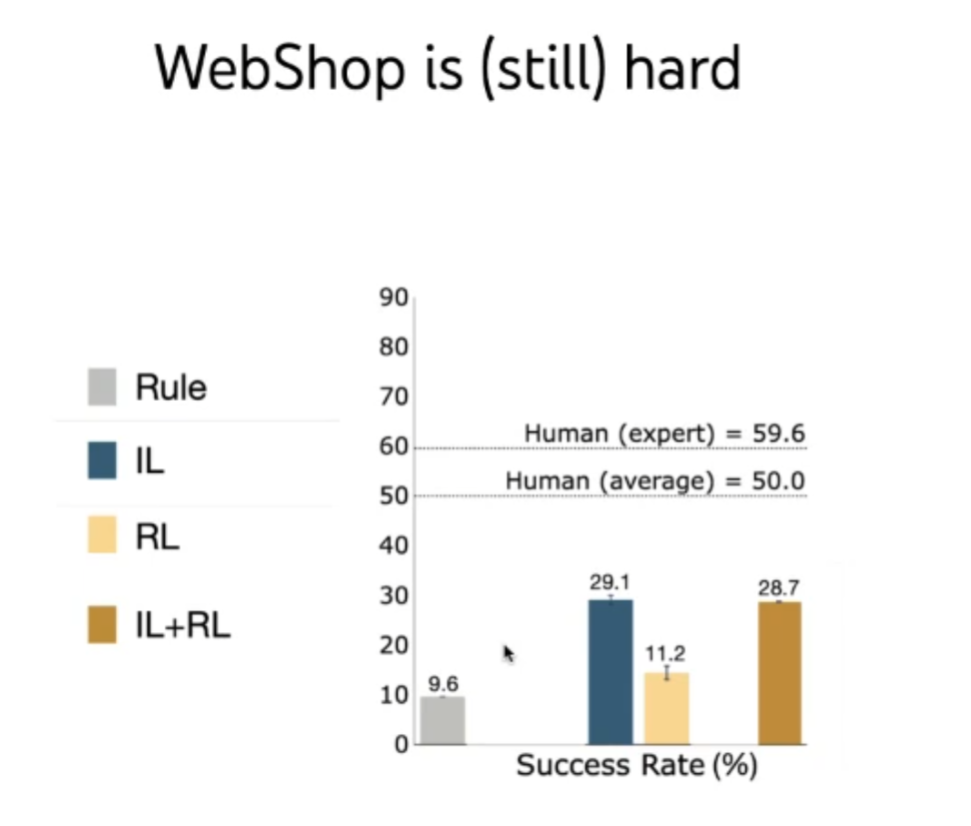
Code Interaction (interact with computer)
LLM - auto-regressive way
Human code - interactive way
Lang-Chain is one example?

